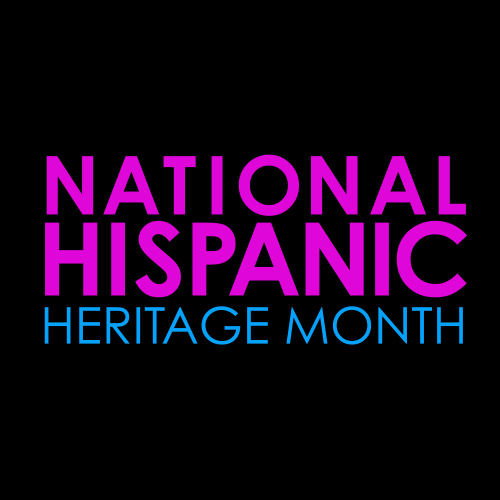
A guest post from Alissa Mailen Perrotto, President & Chief Executive Officer of the Sexual Assault Resource & Counseling Center of Lebanon and Shuylkil Counties, and former Contract Liaison for the Pennsylvania Coalition to Advance Respect.
Each year from September 15 to October 15 the United States celebrates Hispanic Heritage Month. The celebration spans a number of national independence days for Spanish speaking countries in Central and South America and honors the rich cultures and heritage of people of many different races and nationalities who identify Spanish as the language of their hearts and/or the culture of their ancestors. As a non-Latina white woman living in the United States at a time of great uncertainty and unrest for many Hispanic and Latin@ people, what does it mean to celebrate a month of such wonderful cultural heritage? For me, it involves three actions.
Appreciation:
Part of appreciating Hispanic Heritage is recognizing the monumental scope of these cultures and backgrounds in our country today. Based on data from the 2010 Census, close to 20% of our country identifies as Hispanic/Latinx. That's a huge number of neighbors, friends, teachers, students, parents, children, pastors, doctors, nurses, business owners, farmers, lawyers, restaurant workers, police officers...you get the idea.
Also recognize that not all Latinx people are the same. While sharing in a common language or cultural identity, each person and family carries their own background, traditions, foods, dialects, and history. These vary based on country, region, and experience. As a nation of immigrants founded on the principles of personal freedom, many of us as know how important our own backgrounds and cultures are to us. We all must pay the same respect and appreciation to our Latin@/x neighbors. We can all take the time to get to know the unique backgrounds and cultures represented in our own communities. We can make space at the table for learning and sharing together. We can patronize Latin@/x owned businesses and include Latinx cultures and identities in our curricula in schools. At a time when misperceptions and micro aggressions run rampant in media and popular culture, we should take the time to build our knowledge base and expand our thinking to accurately include people of varying identities and backgrounds.
In our house, a favorite bedtime story is Abuela by Arthur Dorros. It's a colorful children's book told from the perspective of a child whose grandmother is a Latina immigrant. Abuela speaks mostly Spanish, while her grand daughter, Rosabla, tells the story in mostly English. Their adventures show Abuela's love of family, their visits to family owned businesses, how many Spanish words and elements became integrated into US culture, and honors icons like the Statue of Liberty and what she represents to immigrant families and their children. My hope is that representative and appreciative media will help the little people in my house build a rich appreciation for all people, and not just people who look and speak like they do. Many museums, cultural centers and community groups will also host events this month. Take some time to check out what's happening near you and join in the celebrations.
Appropriation:
 As a mindful participant in Hispanic Heritage Month, take some time to learn about cultural appropriation so that you can avoid it. Appropriation, or misappropriation as it is more generally termed, steals bits and pieces from a culture and spits them back out, out of context. While sometimes unintentional, the impact of cultural appropriation is that it minimizes, makes fun of, or exploits another person's culture for personal gain. Cultural appropriation is the dark side of appreciation, and it is something to be avoided. When engaging across cultures, consider who is benefitting, who is honored, who is gaining financially, and who has power in the exchange.
As a mindful participant in Hispanic Heritage Month, take some time to learn about cultural appropriation so that you can avoid it. Appropriation, or misappropriation as it is more generally termed, steals bits and pieces from a culture and spits them back out, out of context. While sometimes unintentional, the impact of cultural appropriation is that it minimizes, makes fun of, or exploits another person's culture for personal gain. Cultural appropriation is the dark side of appreciation, and it is something to be avoided. When engaging across cultures, consider who is benefitting, who is honored, who is gaining financially, and who has power in the exchange.
When in doubt, sit it out. Learn more and come back to it in a more informed way. Be prepared to talk about your choices and concerns with others if you think cultural appropriation is happening. One common way that cultural appropriation happens around this time each year is through Halloween costumes. Many costume manufacturers misappropriate cultural practices, traditional dress, and mimic ethnic features in ways that are offensive, problematic, or racist. We can do better!
Application:
In addition to learning about the rich histories, cultures, and identities that contribute to Hispanic representation in the United States, part of my role as a non-Latina advocate in the anti-sexual violence movement is finding ways to apply what I learn to my work. This includes making sexual assault services and rape crisis centers accessible and welcoming to Hispanic and Latin@ community members. It means understanding the ways that inequality and oppression contribute to risks for sexual violence victimization. It means funding programs and initiatives that are culturally-informed and relevant for prevention. It means honoring and valuing the work and contributions of the Hispanic and Latin@ advocates and activists who are rocking this work in the face of adversity, tokenization, and discrimination. Happy Hispanic Heritage Month to all who will learn, celebrate, and take action for the greater good!
